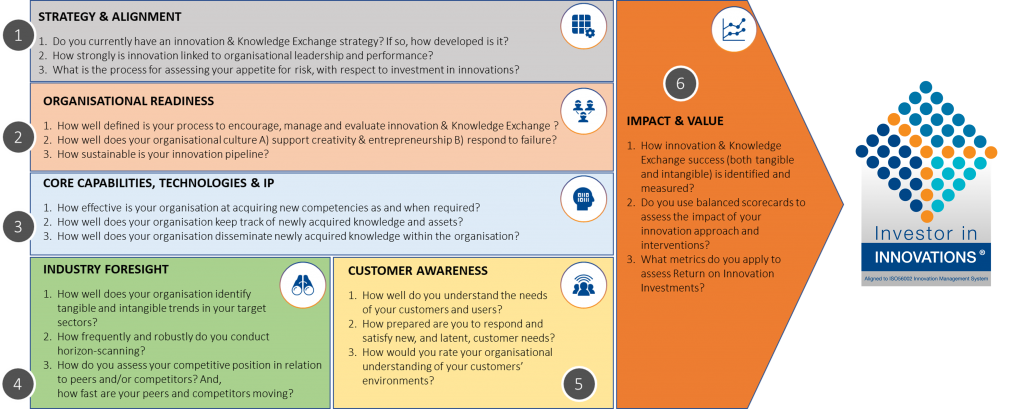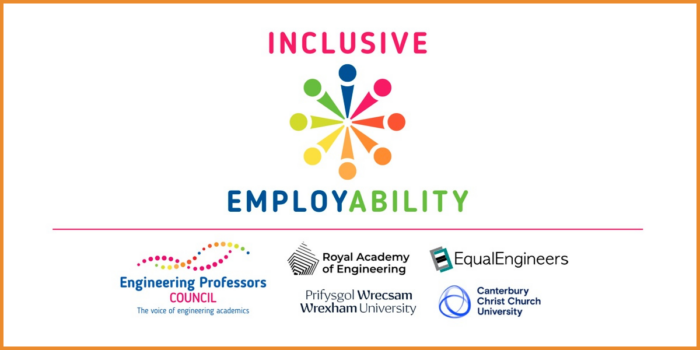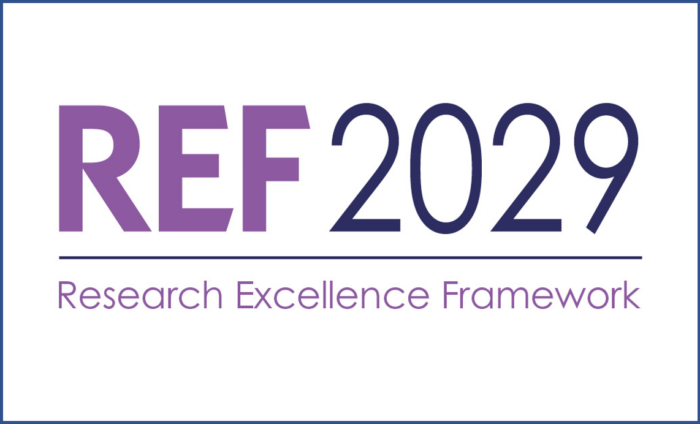 Theme: Knowledge exchange, Universities’ and businesses’ shared role in regional development, Collaborating with industry for teaching and learning, Research
Theme: Knowledge exchange, Universities’ and businesses’ shared role in regional development, Collaborating with industry for teaching and learning, Research
Author: Prof Sa’ad Sam Medhat (IKE Institute)
Keywords: Innovation Benchmarking, Innovation Portfolios, Innovation-driven Leadership, ISO 56002, Industrial Collaboration, Growth
Abstract: The Institute of Innovation and Knowledge Exchange works closely with business and industry as well as with universities (e.g. City of Birmingham, Plymouth, Westminster). The case study will feature the application of the Investor in Innovations Standard (Aligned to the ISO 56002 Innovation Management System) within the Research, Innovation, Enterprise and Employability (RIEE) Directorate of Birmingham City University (BCU). The Case Study will look at six key areas: 1. Strategy and Alignment; 2. Organisational Readiness; 3. Core Capabilities and Technologies; 4. Industry Foresight; 5. Customer Awareness; and 6. Impact and Value.
Introduction
This case study draws upon the work and outcomes of the Investor in Innovations (I3) ISO56002 Standard programme Birmingham City University’s (BCU) Research, Innovation, Enterprise and Employability (RIEE) department undertook with IKE Institute to benchmark their existing innovation capabilities, identify gaps and provide an action plan for future improvement in innovation and knowledge exchange (KE).
The validation and benchmarking work conducted with BCU RIEE used a six category standard framework (see fig. 1): strategy and alignment, organisational readiness, core capabilities, technologies and IP, industry foresight, customer awareness and impact and value.

Fig. 1 Investor in Innovations ISO56002 Standard Framework
Aim
The aim of the case study was to examine each of these categories to assess how knowledge exchange methodologies, practices, tools and techniques were being used to support the university’s innovation ambitions, and ultimately, to drive up value and impact.
Innovation and knowledge exchange are inextricably linked (see fig. 2). Innovation needs knowledge exchange to fuel every stage of its process, from listening and discovery, through design and experimentation to implementation and measurement. Conversely, knowledge exchange needs innovation to create a focus for engagement. Innovation gives knowledge exchange its creative, entrepreneurial spirit. The two are required to work in unison if an organisation is to achieve higher levels of innovation maturity.

Fig. 2 The link between the innovation process and knowledge exchange
Enabling innovation and knowledge exchange to work concurrently was shown to be a central theme within RIEE, exemplified, particularly, through their STEAMhouse project (see fig. 3). A collaborative innovation campus which provides product and service innovation and knowledge exchange to business.

Fig 3. BCU RIEE’s STEAMhouse project
Strategy and alignment
The critical aspect of this category was to examine BCU’s Innovation Strategy and how well aligned this was to the overall 2025 Strategy for the university. An underpinning element of the innovation strategy, was reviewing, supporting and improving their innovation ecosystem partners (both business and industry and academic), widening and growing their STEAM (Science, Technology, Engineering, Art and Mathematics) communities of practice, and supporting direct knowledge exchange through the roll-out of commercialisation policies, training, capital and digital infrastructure to support more students and entrepreneurs.
Organisational readiness
This category assessed BCU’s innovation culture, creative capabilities and the structures, processes and governance in place to support innovation developments. When examined through the knowledge exchange lens, these areas translated into BCU’s ability to use KE to spark discussion, curiosity and inspire creativity accelerating the build up of a virtuous growth mindset. BCU have engaged with over 2,500 businesses, and formally assisted 1,425 to start, grow or innovate since 2017/18. BCU demonstrated their ability to leverage this landscape to create powerful sub-networks within their wider ecosystem for greater knowledge exchange, thus, generating a force multiplier at every stage of their innovation process. Internally, dissemination of innovation wins and promotion of ideas sharing has ramped up the institution’s innovation knowledge base and underpinned a sustainable innovation pipeline of activities.
Core capabilities, technologies and IP
For an institution like BCU, this category focused on building capacity in expertise and resource. Rapid access to external knowledge sources within RIEE’s ecosystem helped to reflect different perspectives from SMEs, larger businesses, other academic stakeholders and industrial representatives from associations and learned societies. Development of 100 innovation ambassadors within RIEE has brought greater access to the ambassadors’ own communities of practice and collaborative networks. The use of crowdsourcing mechanisms such as innovation challenges, have helped build momentum around specific product, service or societal problems. Use of collaborative knowledge STEAM tools such as STEAM Sprints, have enabled greater creative problem solving and refinement of selected ideas.
Industry foresight
At the heart of this category is knowledge exchange. Through analysis and synthesis, information becomes intelligence supporting innovation directions. Within RIEE, long-established and engrained partnerships with external stakeholders and engagement on industry forums have been utilised to acquire sectoral knowledge and key market intelligence informing and shaping the exploration and exploitation of new scientific, technological and engineering discoveries. The university’s representation on key regional advisory boards positioned them as thought leaders and led to sculpting regional strategies and plans.
Customer awareness
BCU’s Public and Community Engagement Strategy forms the basis for mechanisms to drive productive knowledge exchange. This category focused on understanding the needs of the customer and involving them in the innovation development process. RIEE demonstrated its ability to use collaborative networks and customer ecosystems to identify challenges. They harnessed co-creation practices and funding – e.g. Proof of Concept Support Fund for Staff – to then deliver innovative solutions.
Effective knowledge exchange requires coherent, relevant and accurate data. Through BCU’s CRM, segmentation and narrow-casting has been achieved. This targeting of specific information through BCU’s online platforms and social media channels has encouraged 13,591 connections with businesses and proliferated greater knowledge exchange with over 2,500 engaged relationships.
Impact and value
This category’s focus ensured that a structured approach to implementation was adopted to maximise commercial success, and measurement of the innovation process meets organisational objectives. In this context, BCU’s community engagement and knowledge exchange through multiple pathways helped to underpin continual improvement of RIEE’s innovation process. The positive impact of knowledge exchange for RIEE has been defined by the development of STEAMhouse project – phase 2, and the creation of BCU Enterprises, to further drive the impact of RIEE, including research, experimentation, exploitation, and commercialisation of product IP and service know-how in STEAM disciplines.
Outcomes
Gaps were identified across all six of the I3 Standard framework categories. The key improvements in KE included:
- Identifying methods to activate critical behaviours in staff, students and ecosystem partners, to encourage greater sharing and knowledge exchange;
- Clustering innovation activities around key technology domains and IP assets, enabling more targeted knowledge exchange with partners, suppliers and customers within the innovation ecosystem;
- Developing a more systematic way to communicate and engage with innovation partners yearly, to assess change in customers’ ecosystems, curate priorities of demand and increase BCU’s innovation maturity level;
- Identifying more targeted KPIs to measure RIEE’s activities, thus determining progress and success, return on innovation investment and yield value.
Any views, thoughts, and opinions expressed herein are solely that of the author(s) and do not necessarily reflect the views, opinions, policies, or position of the Engineering Professors’ Council or the Toolkit sponsors and supporters.




